Epoxy Injection of Concrete and
Wood
Repair of
Cracks and Hollow Plains with Epoxy Injection
Epoxy Structural Concrete and Wood Repair / Waterproofing
The following article is written with enough information about resin injection
systems to help protect the Owner from the misuse or improper installation of an injection
systems. For more information contact Norm Lambert.
One of the most versatile, problem solving products available in epoxy systems today is
Epoxy Injection Resin.
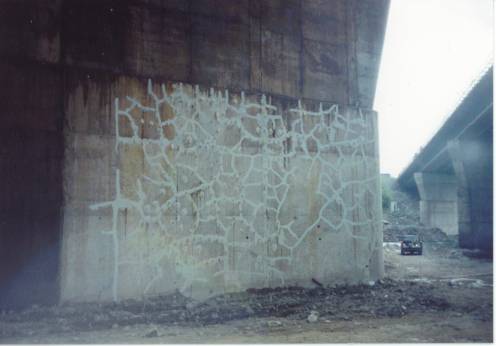 Structural restoration of concrete by epoxy
injection is very often the only alternative to complete replacement. It therefore results
in large cost savings. Injection protects the rebar and stops water leakage.
Structural restoration of concrete by epoxy
injection is very often the only alternative to complete replacement. It therefore results
in large cost savings. Injection protects the rebar and stops water leakage.
Epoxy injection of concrete cracks has been used for decades. When
properly installed it is still working as well as it did right after it
was installed.
Epoxy Injection Resin is a system for welding cracks back
together. This welding restores the original strength and loading originally designed into
the concrete. Epoxy injection restores the structural qualities the concrete design
intended. In other words under most conditions it makes the concrete as good as new. It
creates an impervious seal to air, water, chemicals, debris, and other contamination.
Other waterproofing injection systems like urethane resin will seal
the crack from water but will not repair the the member structurally.
Not repairing a member structurally makes the member vulnerable to additional structural
decay. This structural advantage that an epoxy injection repair gives,
makes it the best choice for most situations.
A crack, obviously, is a sign of failure caused by stresses, inadequate design,
improper curing, etc. One of the dangers of a structural crack is the effect that it has
on the reinforcing bar. The reinforcing represents one of the main structural values of
the concrete. 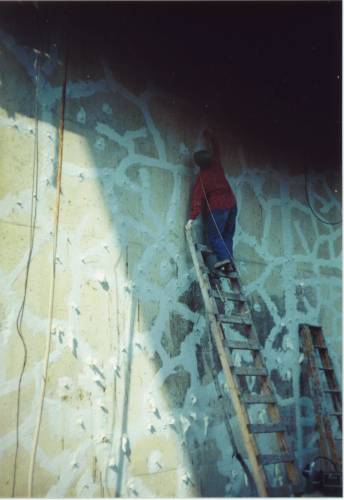
Cracks left unprepared allow moisture, road salts and other contaminants to penetrate
and attack the rebar. The rebar deteriorates, losing the structural value. Loosing the
entire structure is often the result. You can see this demonstrated in hundreds
of neglected bridges across the U.S.
Epoxy injection resin has two purposes. First, it effectively seals the crack to
prevent the damaging moisture entry. Secondly, it monolithically welds the structure
together. Most people assume that this welding of the structure is the most important
result of the repair. Actually what is most important is the sealing the rebar
and preventing it from deteriorating.
The sealing properties of the injection prevents premature deterioration of the
reinforcing. This can be of equal, or in some cases greater importance than the structural
welding. It would theoretically always be desirable to get this welding effect.
Crack Analysis
As with all repair and rehabilitation of concrete, the initial job analysis is by far
the most important step. Epoxy Injection Resin will weld concrete cracks but, of course,
will not repair the cause of the cracking.
Analyze each potential injection application to determine the exact cause or causes of
the cracking. Correcting the cracking problem can be fairly simple, or may be difficult
involving design changes.
Consult a structural engineer when design changes are necessary. Do this before
starting the injection. Repairing cracks by Injection is effective after these design
changes. Prevent future cracks by fixing the original cause of the cracking, when ever
possible.
Parking garages are an example of cracking problem that require a structural
engineering analysis.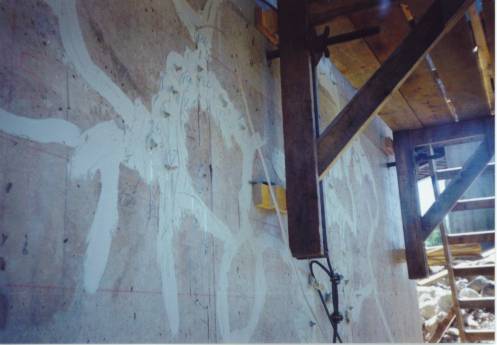 Often inadequate design for expansion/contraction is the cause for
parking garage structural cracking. Avoid weld injecting a crack if there are not enough
expansion joints. Sometimes flexible overlays such as Epoxy.com
System # 495 can be used to overcome this defect. This does not however encapsulate the rebar in a way
that will totally stop the premature deterioration of the steel. Often times additional
joints are needed, thus the analysis of cracking problems is critical.
Often inadequate design for expansion/contraction is the cause for
parking garage structural cracking. Avoid weld injecting a crack if there are not enough
expansion joints. Sometimes flexible overlays such as Epoxy.com
System # 495 can be used to overcome this defect. This does not however encapsulate the rebar in a way
that will totally stop the premature deterioration of the steel. Often times additional
joints are needed, thus the analysis of cracking problems is critical.
Injection Preparation
Proper job preparation is essential to insure maximum results. Preparation before
injection is even more important. Once the resin is in the crack, there is no turning
back. The two most effective systems for setting injection ports:
- Surface
Ports for General Purpose Use
- Drilled
For Special Uses Applications
Port Setting
It is extremely important that if drilling to use the drill type ports that
it be done with vacuum attached
swivel drill chuck and hollow drill bits. Concrete dust can be detrimental to the
injection processes in several ways.
Any dust remaining in the drill hole near a crack can combine with the
very low viscosity injection resin, forming a semi-paste. This paste can slow or even
block the resin flow. Drilling very tight crack with a solid drill forces dust into the
crack. This seals the crack from resin flow. Do not allow shortcuts in the drilling
procedures!
However, for most applications the surface port is the easiest and most
effective method.
Determining the spacing of ports is done by a highly experience applicator. This
spacing is a factor of the tightness of the crack and the depth of the concrete substrate.
Spacing is normally between four (4) and eight (8) inches.
Port Setting and Sealing

Align ports directly over cracks. That allows injection resin to flow into the crack.
Seal surface cracks. Sealing the exterior of cracks is done with
Epoxy Gel
type Bonder.
Testing The System
Test cracks that are ill defined, or if dust or debris is in the crack. This testing
may be done by injecting water into the crack area.
Water left in the cracks will not effect the injection process or the curing of the
Epoxy.com Injection Resin. Heavier injection resin forces the water out the cracks.
Water injection helps clean the cracked areas. More important, is that it helps avoid the
unexpected. This process of flushing the cracks is commonly skipped by more experience
contractors, who can tell if there will be a flow of resin, by just looking at them.
However, when in doubt water testing is a must.
If the cracks contain algae, chlorinated water containing copper sulfate is injected.
After pumping this mixture is left over night. The next morning the crack is flushed by
pumping fresh water, into it. This flushes it out before resin injection begins.
Efflorescence builds up on the bottom of a crack in a horizontal slab. Water in the
crack extracting soluble calcium hydroxide is the cause. The water evaporates at the
surface leaving the lime, which later reacts with the carbon dioxide in the air to form
limestone. The inside of the crack, is frequently free of limestone and making it suitable
for injection.
Epoxy Resin Properties Epoxy.com Product #301
| Mix Ratio | 2:1 By Volume |
| Viscosity |
400-450 cps |
| Initial Cure |
6 - 8 hours (with normal cure hardener) |
| Final Cure |
24 hours |
| Pot life |
30-40 minute (with regular cure hardner) |
| Packaging (unit size) |
3 gal unit, 15 gal unit, 165 gallon unit |
| Standard Colors |
clear |
| Colors |
Clear - Can be pigmented at an additional charge to make it
easier to see when pumping. |
| Elongation (ASTM D-638) |
Greater than 10% |
| Compressive Strength (ASTM D-695) |
10,000 PSI (min) |
| Tensile Strength (ASTM D-790) |
3,500 PSI |
| Concrete Bond Strength (ASTM C-882) |
2,290 PSI |
| Shrinkage (ASTM C-883) |
Passed Test |
| Thermal Compatibility (ASTM C-884) |
Passed Test |
| Adhesion to Concrete (ACI Committee 403) |
250 PSI (concrete fails) |
Resin Injection
Epoxy resin injection with any industry standard 2:1 injection machine or
Epoxy.com Injection Gun designed for Epoxy.com Injection resin is the only
way of assuring quality installation. Single component caulking guns, pressure pots, or similar batching
equipment are not suitable for injection.
 As an alternative to an epoxy injection machine,
Epoxy.com offers 450 ml binary injection system. This uses a binary caulking gun and static mix tubes to inject thisresin.
As an alternative to an epoxy injection machine,
Epoxy.com offers 450 ml binary injection system. This uses a binary caulking gun and static mix tubes to inject thisresin.
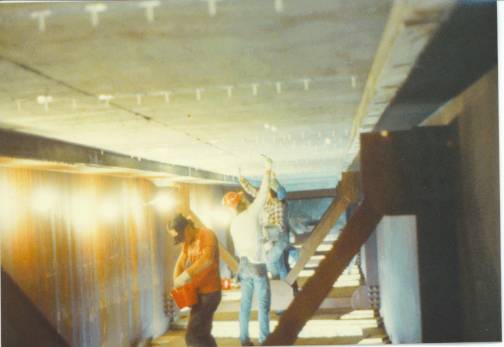
Limit pressures to 40 p.s.i for most applications. Excessive pressures can create
additional stressing of the crack. It can also cause hydraulic lifting, rupturing of the
cracked substrate, or further elongation of the crack. Low pressures allow gradual resin
flow into the crack for deeper penetration. On vertical cracks, injection is start at the
lowest point, and continue upward on the crack area. While injecting the lowest port,
resin will flow to and out of the next higher port.
When pure resin is flowing out the next port cap, plug the current injection port and
move to the next port. Then injection continues in the port showing resin flow. This
procedure continues until all ports are full.
Epoxy Injection Resin Systems should be of very low viscosity for most applications. That
way it will flow in the smallest hair line cracks. Resin can travel several feet from the
point of injection. It may take some time before reaching the next port or penetrating
through pin holes in the surface. Coring samples have shown that epoxy injection
effectively fills cracks including small voids and hairline cracks.
Injection During Extreme Weather
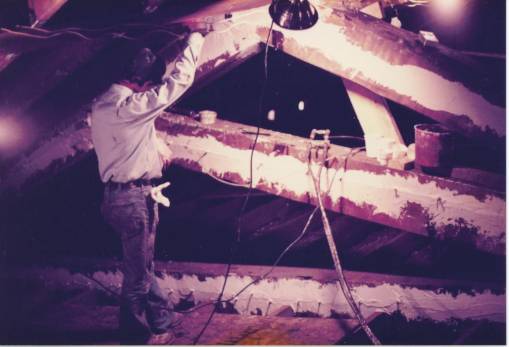
A cold substrate will cause an increase in the viscosity of the injection resin. This
slows down the rate of injection. A hot substrate results in premature jelling of the
resin with sequential loss of penetration. During extremely hot weather an open bridge
deck may exceed temperatures as high as 140 Degrees F. Special precautions are necessary
before injection work can be done in such weather.
The precaution may be shading the bridge, and water cooling. Always check substrate
temperature. The injection machine and its hoses require isolation from extremes of
temperature.
Epoxy injection undertaken during cold weather also requires special
precautions.
When doing injection work in freezing conditions, determining if there is ice present
in the crack is critical. Determining if a cracks inner surfaces are ice coated, is
equally important. When injecting under these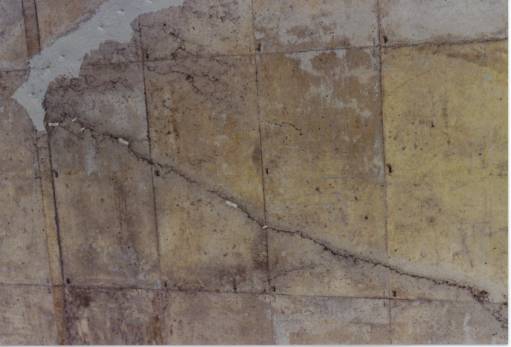 conditions, the resin will not bond to the
substrate and no structural rebonding will result. It is usually safer to preheat the
portion of the structure you are injecting.
conditions, the resin will not bond to the
substrate and no structural rebonding will result. It is usually safer to preheat the
portion of the structure you are injecting.
When heating a structure do not overheat it. This closes the crack. When removing heat,
the crack may rapidly open. This will rupture the resin before it has a chance to achieve
final cure. In most cases, indirect heating is much more desirable than direct heating.
Maintain heat for several hours before and after the injection application.
Aesthetics
The color of the sealer material used in resin injection is concrete gray. They are
difficult to remove. If aesthetics require complete cleaning, the sealing material can be
removed by grinding. This is normally done at an additional charge to the OWNER.
Injection Against A Head of Water
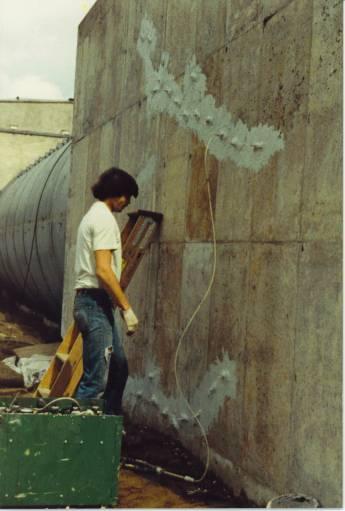
Injection of Epoxy Injection Resin against a head of water requires a slightly
different procedure than normal injection. If water is running from a crack, applying a
hydraulic cement (fast setting) seals the cracks and sets the ports. Epoxy pastes will not
set up under this type of wet condition. The hydraulic cement seals the cracks and diverts
all water flow through the injection ports.
Hydraulic cement is fast setting, but it does not have the strength needed for an
Injection Sealer. Epoxy Concrete Bonder can have the strength to
prevent blowouts or leaks while injecting. After the hydraulic cement cures applying
Epoxy Concrete Bonder. That solves this problem.
The injection process follows the procedures described before. The Injection resin
forces the water out of the crack and through the adjacent ports. The resin has an amber
color and does not look like water. Pure resin flows from the higher port before capping
and moving on. The head of water will require increasing the injection pressure used.
INJECTING DELAMINATIONS & HOLLOW PLANES
Delamination of concrete structures is an area where injection can also offer selective
repair. A prime example is bridge decks or other self supporting structures. The most
common delamination is shearing of the concrete. This is commonly at the upper rebar mat.
Another common situation is hollow plane that develop when concrete bridge piers are
resurfaced. Old piers are encased in new concrete. Hollow planes in this type of
application are common, especially against smooth sections of the old pier. Cracking then
occurs on the surface perpendicular to the hollow plane.
These delaminated area is subject to chemical penetration from the surface and moisture
which may attack the reinforcing bar. If the delamination is not repaired, traffic will
cause the area to pop-out by pounding on the delaminated upper concrete layer. Freeze-Thaw
damage will also tear the concrete apart. The greater the number of freeze-thaws, the more
water in the cracks during these free-thaws, the greater, and quicker the damage to the
concrete.
Map delaminations by drag chain, hammer or sounding device. The damaged area requires
no less than four (4) ports drilled for resin flow, depending on the size and shape of the
delamination. This prevents the trapping of water that may be present.
The delamination is normally hollow planes that run along the reinforcing bar. When
injecting the delamination, the resin will follow these hollow planed areas and can travel
several feet in filling the voids.
CONCLUSION
Epoxy Injection Systems is very effective at repairing concrete cracks, delaminations,
and hollow planes when used according to manufacturers recommendations. Job analysis and
proper preparation are very important to insuring the maximum performance from the Epoxy
Products, or any other concrete repair products. The right equipment is critical. Proper
setup continuous mixing epoxy injection machines must always be used with no exception.
Injection staff and management must have the training and experience to do the work right
the first time. Epoxy injection has to be done right the first time. There is no second
chance. So it is critical that your injection work be done by well trained and equipped,
experienced personnel.